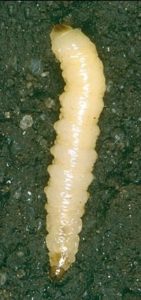State of Chlorpyrifos, Scientists Defend and Seek Alternatives for Growers
go.ncsu.edu/readext?590324
en Español / em Português
El inglés es el idioma de control de esta página. En la medida en que haya algún conflicto entre la traducción al inglés y la traducción, el inglés prevalece.
Al hacer clic en el enlace de traducción se activa un servicio de traducción gratuito para convertir la página al español. Al igual que con cualquier traducción por Internet, la conversión no es sensible al contexto y puede que no traduzca el texto en su significado original. NC State Extension no garantiza la exactitud del texto traducido. Por favor, tenga en cuenta que algunas aplicaciones y/o servicios pueden no funcionar como se espera cuando se traducen.
Português
Inglês é o idioma de controle desta página. Na medida que haja algum conflito entre o texto original em Inglês e a tradução, o Inglês prevalece.
Ao clicar no link de tradução, um serviço gratuito de tradução será ativado para converter a página para o Português. Como em qualquer tradução pela internet, a conversão não é sensivel ao contexto e pode não ocorrer a tradução para o significado orginal. O serviço de Extensão da Carolina do Norte (NC State Extension) não garante a exatidão do texto traduzido. Por favor, observe que algumas funções ou serviços podem não funcionar como esperado após a tradução.
English
English is the controlling language of this page. To the extent there is any conflict between the English text and the translation, English controls.
Clicking on the translation link activates a free translation service to convert the page to Spanish. As with any Internet translation, the conversion is not context-sensitive and may not translate the text to its original meaning. NC State Extension does not guarantee the accuracy of the translated text. Please note that some applications and/or services may not function as expected when translated.
Collapse ▲About a month ago, I highlights an article from Brad Haire at Southeast Farm Press on Where Are We With Chlorpyrifos?
Brad’s article talked about how Chlorpyrifos has been in limbo since last summer. For now, growers who need the pesticide can still use it. But for how long?
In August, the U.S. Court of Appeals for the Ninth Circuit ordered the EPA to immediately revoke all tolerances for chlorpyrifos, essentially banning its use. In doing this, the court leapfrogged over the EPA’s regulatory process and current review of the pesticide. In September, the EPA asked the court to review again its decision. The first week of February, the court announced it would indeed rehear the case.
Since last month, advocates across the agriculture community have stepped up including Virginia Tech University. A recent article from John Hart (Southeast FarmPress | 3/12/2019) talks about peanut scientists defending use of chlorpyrifos and help seek alternatives for growers. A snapshot of John’s article can be found below.
The registration of chlorpyrifos, the active ingredient in Lorsban, should continue. It is safe for pesticide applicators and consumers when label directions are followed. That’s the message Virginia Tech scientists are delivering.
Chlorpyrifos is the only chemical tool registered for Virginia peanut farmers against southern corn rootworm, a potentially devastating pest.

Speaking at the annual Virginia peanut growers production meeting Feb. 27 at the Paul D. Camp Community College in Franklin, Dr. Sally Taylor, Virginia Tech Extension entomologist, said NGOs, including the Pesticide Action Network North America, continue to petition the Ninth Circuit Court of Appeals to ban chlorpyrifos.


